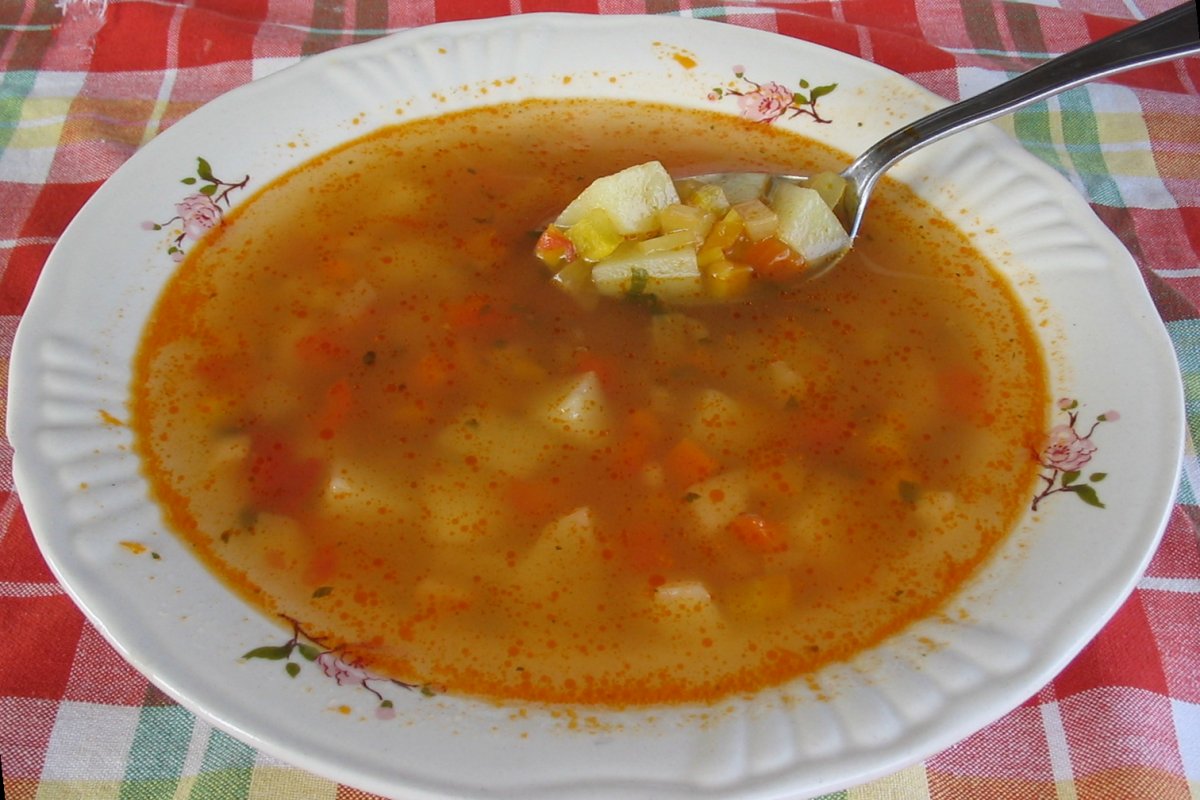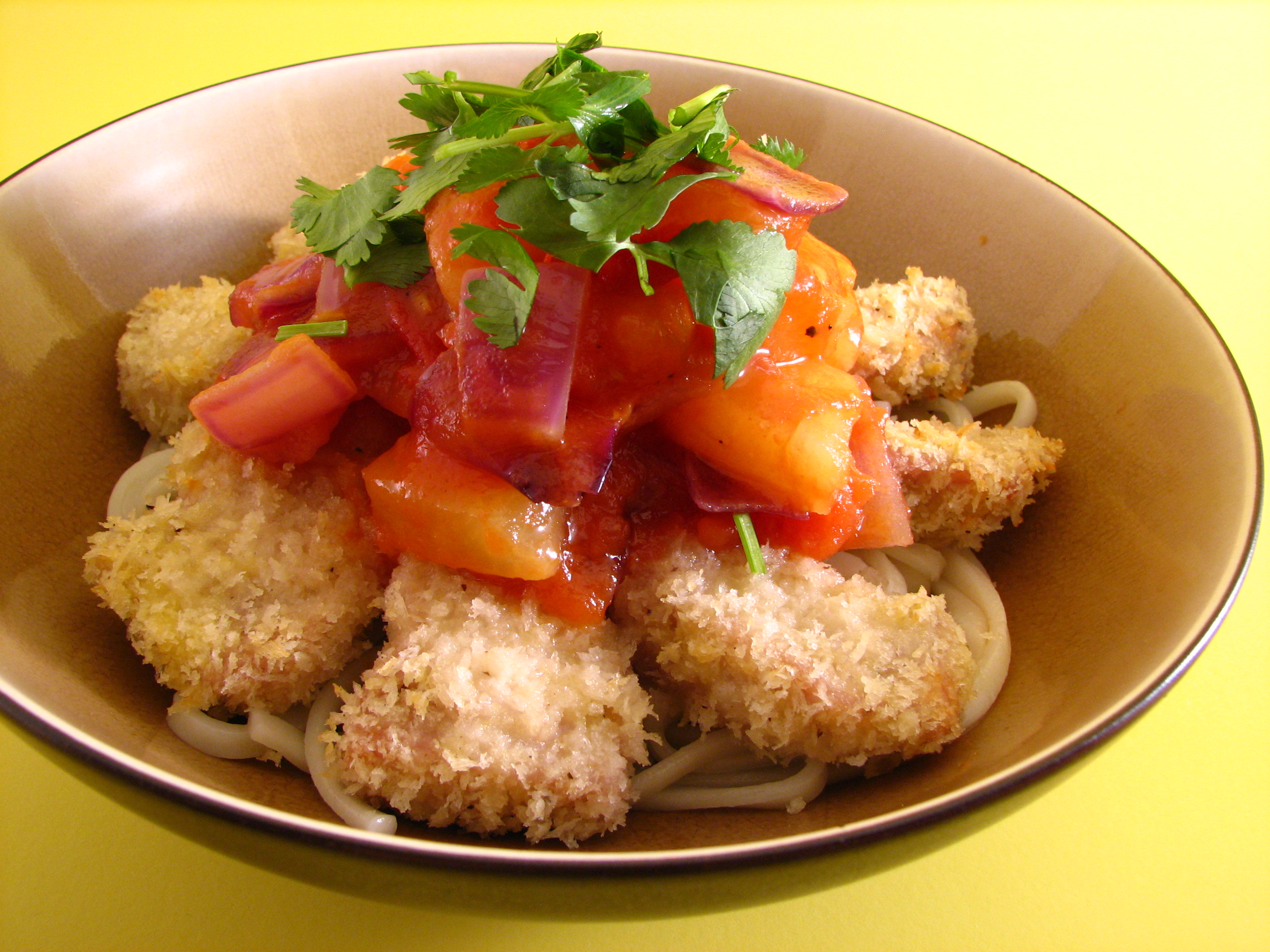|
Pârjoale
Pârjoale (also called ''Moldavian Pârjoale''; ro, Pârjoale moldovenești), plural form of pârjoală, are Romanian and Moldovan meatballs, usually minced pork and beef (sometimes lamb or chicken) mixed with eggs, grated potatoes, slices of bread soaked in milk or water, chopped onions, herbs (parsley, dill, thyme), spices (pepper) and salt, homogenized to form balls which are flattened to an elongated shape, passed through bread crumbs, and fried in hot oil. They can also be marinated in a tomato sauce. See also * Chiftele * Perişoare * Mititei * Dry meatballs Dry or dryness most often refers to: * Lack of rainfall, which may refer to **Arid regions **Drought * Dry or dry area, relating to legal prohibition of selling, serving, or imbibing alcoholic beverages * Dry humor, deadpan * Dryness (medical) ... Notes and references {{DEFAULTSORT:Parjoale Romanian breaded dishes Moldovan cuisine ro:Pârjoale moldovenești ... [...More Info...] [...Related Items...] OR: [Wikipedia] [Google] [Baidu] |
Chiftele
Chiftele, plural form of chiftea, are flat and round meatballs from Romanian cuisine, Romanian traditional cuisine. Chiftele are usually made from minced pork, mixed with mashed potatoes and spices, then deep-fried. Chiftele is served with pilaf or mashed potatoes. A variant mixing rice inside the meatball is called ''perişoare'' for sour soup, making ''ciorbă de perişoare''. There is a recipe called ''chiftele de peşte'' (fish chiftele) consisting of fishcake made from carp. Etymology The word ''chiftea'' comes from ''köfte'', which is the Turkish language, Turkish word for ''kofta''. History Centuries of Ottoman presence in Romania has left some variations from the Turkish cuisine, Turkish culinary arts. Chiftele is the Romanian version of Turkish ''köfte''. See also * Kofta * List of meatball dishes * Mititei * Pârjoale Notes and references External links * Chiftele's recipe* Chiftele recipe {{Cuisine of Romania Romanian dishes Meatballs ... [...More Info...] [...Related Items...] OR: [Wikipedia] [Google] [Baidu] |
Romanian Cuisine
Romanian cuisine () is a diverse blend of different dishes from several traditions with which it has come into contact, but it also maintains its own character. It has been mainly influenced by Turkish and a series of European cuisines in particular from the Balkans, or Hungarian cuisine as well as culinary elements stemming from the cuisines of Central Europe. Romanian cuisine includes numerous holiday dishes arranged according to the mentioned season and holiday since the country has its roots in the Eastern Orthodox Church. Romanian dishes consist of vegetables, cereals, fruits, honey, milk, dairy products, meat and game. Multiple different types of dishes are available, which are sometimes included under a generic term; for example, the category '' ciorbă'' includes a wide range of soups with a characteristic sour taste. Variations include meat and vegetable soup, tripe (''ciorbă de burtă'') and calf foot soup, or fish soup, all of which are soured by lemon juice, sauer ... [...More Info...] [...Related Items...] OR: [Wikipedia] [Google] [Baidu] |
Mititei
Mititei () or mici (; both Romanian words meaning "little ones", "small ones") is a dish from the Romanian cuisine, consisting of grilled ground meat rolls in cylindrical shape made from a mixture of beef, lamb with spices, such as garlic, black pepper, thyme, coriander, anise, savory, and sometimes a touch of paprika. Sodium bicarbonate and broth or water are also added to the mixture. It is similar to ćevapi and other ground meat based dishes throughout the Balkans and Middle East. It is often served with french fries, mustard and ''murături'' (pickled vegetables). History A popular story claims that 'mici' or 'mititei' were invented in the late 14th century and they are originated from the Ottoman Empire. Throughout the years, the recipe lost some of the original ingredients, such as caraway seeds and allspice, and began being made with pork, rather than beef and lamb. Sodium bicarbonate, a raising agent, is also commonly added to the modern Romanian recipe, wh ... [...More Info...] [...Related Items...] OR: [Wikipedia] [Google] [Baidu] |
Moldovan Cuisine
Moldovan cuisine is a style of cooking related to the people of Moldova. It consists mainly of ingredients such as various meats, potatoes, cabbage, and a variety of cereal grains. The local cuisine is very similar to Romanian, and also draws inspiration and elements from other cuisines in the region, including Greek, Polish, Ukrainian, and Russian, with a great influence left by the Ottoman cuisine. Background Moldova's fertile soil (''chernozem'') produces plentiful grapes, fruits, vegetables, grains, meat, and milk products, all of which have found their uses in the national cuisine. The fertile black soil combined with the use of traditional agricultural methods permits the growth of a wide range of foods in Moldova. Dishes Perhaps the best known Moldovan dish is a well-known Romanian dish, '' mămăligă'' (a cornmeal mush or porridge). This is a staple polenta-like food on the Moldovan table, served as an accompaniment to stews and meat dishes or garnished with cotta ... [...More Info...] [...Related Items...] OR: [Wikipedia] [Google] [Baidu] |
Meatballs
A meatball is ground meat rolled into a ball, sometimes along with other ingredients, such as bread crumbs, minced onion, eggs, butter, and seasoning. Meatballs are cooked by frying, baking, steaming, or braising in sauce. There are many types of meatballs using different types of meats and spices. The term is sometimes extended to meatless versions based on vegetables or fish; the latter are also commonly known as fishballs. History The ancient Roman cookbook ''Apicius'' included many meatball-type recipes. Early recipes included in some of the earliest known Persian cookbooks generally feature seasoned lamb rolled into orange-sized balls and glazed with egg yolk and sometimes saffron. This method was taken to the West and is referred to as gilding. Many regional variations exist, including the unusually large ''kufte Tabrīzī'' from Iran's northwestern region, with an average diameter of . ''Poume d'oranges'' is a gilded meatball dish from the Middle Ages. By region ... [...More Info...] [...Related Items...] OR: [Wikipedia] [Google] [Baidu] |
Pork
Pork is the culinary name for the meat of the domestic pig (''Sus domesticus''). It is the most commonly consumed meat worldwide, with evidence of pig husbandry dating back to 5000 BCE. Pork is eaten both freshly cooked and preserved; curing extends the shelf life of pork products. Ham, gammon, bacon, and sausage are examples of preserved pork. Charcuterie is the branch of cooking devoted to prepared meat products, many from pork. Pork is the most popular meat in the Western world, particularly in Central Europe. It is also very popular in East and Southeast Asia ( Mainland Southeast Asia, Philippines, Singapore, and East Timor). The meat is highly prized in Asian cuisines, especially in Mainland China, for its fat content and texture. Some religions and cultures prohibit pork consumption, notably Islam and Judaism. History Pigs were domesticated in Mesopotamia around 13,000 BC. Charcuterie is the branch of cooking devoted to prepared meat products such as ... [...More Info...] [...Related Items...] OR: [Wikipedia] [Google] [Baidu] |
Beef
Beef is the culinary name for meat from cattle (''Bos taurus''). In prehistoric times, humankind hunted aurochs and later domesticated them. Since that time, numerous breeds of cattle have been bred specifically for the quality or quantity of their meat. Today, beef is the third most widely consumed meat in the world, after pork and poultry. As of 2018, the United States, Brazil, and China were the largest producers of beef. Beef can be prepared in various ways; cuts are often used for steak, which can be cooked to varying degrees of doneness, while trimmings are often ground or minced, as found in most hamburgers. Beef contains protein, iron, and vitamin B12. Along with other kinds of red meat, high consumption is associated with an increased risk of colorectal cancer and coronary heart disease, especially when processed. Beef has a high environmental impact, being a primary driver of deforestation with the highest greenhouse gas emissions of any agricultural product. ... [...More Info...] [...Related Items...] OR: [Wikipedia] [Google] [Baidu] |
Lamb And Mutton
Lamb, hogget, and mutton, generically sheep meat, are the meat of domestic sheep, ''Ovis aries''. A sheep in its first year is a lamb and its meat is also lamb. The meat from sheep in their second year is hogget. Older sheep meat is mutton. Generally, "hogget" and "sheep meat" are not used by consumers outside Norway, New Zealand, South Africa, Scotland and Australia. Hogget has become more common in England, particularly in the North (Lancashire and Yorkshire) often in association with rare breed and organic farming. In South Asian and Caribbean cuisine, "mutton" often means goat meat.''Oxford English Dictionary'', 3rd edition, June 2003''s.v.'',_definition_1b_At_various_times_and_places,_"mutton"_or_"goat_mutton"_has_occasionally_been_used_to_mean_goat_meat. Lamb_is_the_most_expensive_of_the_three_types_and_in_recent_decades_sheep_meat_is_increasingly_only_retailed_as_"lamb",_sometimes_stretching_the_accepted_distinctions_given_above._The_stronger-tasting_mutton_is_now_hard ... [...More Info...] [...Related Items...] OR: [Wikipedia] [Google] [Baidu] |
Chicken (food)
Chicken is the most common type of poultry in the world. Owing to the relative ease and low cost of raising chickens—in comparison to mammals such as cattle or hogs—chicken meat (commonly called just "chicken") and chicken eggs have become prevalent in numerous cuisines. Chicken can be prepared in a vast range of ways, including baking, grilling, barbecuing, frying, and boiling. Since the latter half of the 20th century, prepared chicken has become a staple of fast food. Chicken is sometimes cited as being more healthful than red meat, with lower concentrations of cholesterol and saturated fat. The poultry farming industry that accounts for chicken production takes on a range of forms across different parts of the world. In developed countries, chickens are typically subject to intensive farming methods while less-developed areas raise chickens using more traditional farming techniques. The United Nations estimates there to be 19 billion chickens on Earth today, m ... [...More Info...] [...Related Items...] OR: [Wikipedia] [Google] [Baidu] |
Bread Crumbs
Bread crumbs or breadcrumbs (regional variants including breading and crispies) consist of crumbled bread of various dryness, sometimes with seasonings added, used for breading or crumbing foods, topping casseroles, stuffing poultry, thickening stews, adding inexpensive bulk to soups, meatloaves and similar foods, and making a crisp and crunchy covering for fried foods, especially breaded cutlets like tonkatsu and schnitzel. The Japanese variety of bread crumbs is called ''panko''. Types Dry Dry breadcrumbs are made from dry breads which have been baked or toasted to remove most remaining moisture, and may have a sandy or even powdery texture. Bread crumbs are most easily produced by pulverizing slices of bread in a food processor, using a steel blade to make coarse crumbs, or a grating blade to make fine crumbs. A grater or similar tool will also do. Fresh The breads used to make soft or fresh bread crumbs are not quite as dry, so the crumbs are larger and produce a soft ... [...More Info...] [...Related Items...] OR: [Wikipedia] [Google] [Baidu] |
Dry Meatballs
Dry or dryness most often refers to: * Lack of rainfall, which may refer to **Arid regions **Drought * Dry or dry area, relating to legal prohibition of selling, serving, or imbibing alcoholic beverages * Dry humor, deadpan * Dryness (medical) * Dryness (taste), the lack of sugar in a drink, especially an alcoholic one * Dry direct sound without reverberation Dry or DRY may also refer to: Places * Dry Brook (other), various rivers * Dry Creek (other), various rivers and towns * Dry, Loiret, a commune of the Loiret ''département'' in France * Dry River (other), various rivers and towns Art, entertainment, and media Film * ''Dry'' (2014 film), a Nigerian film directed by Stephanie Linus * ''Dry'' (2022 film), an Italian film directed by Paolo Virzì * ''The Dry'' (film), a 2020 film based on the novel by Jane Harper Literature * ''Dry'' (memoir), a 2003 memoir by Augusten Burroughs * ''The Dry'' (novel), a 2016 novel by Jane Harper Music ... [...More Info...] [...Related Items...] OR: [Wikipedia] [Google] [Baidu] |




.jpg)

